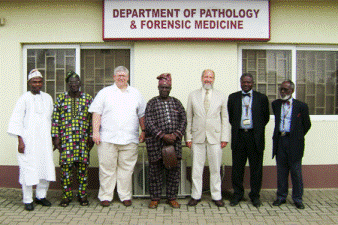Natural Resources, School of

Karl Reinhard Publications
Document Type
Article
Date of this Version
2020
Citation
Published in Archaeological and Anthropological Sciences (2020) 12: 63
DOI: 10.1007/s12520-019-00994-2
Abstract
Pinworms infected Ancestral Pueblo populations since early periods of occupation on the Colorado Plateau. The high prevalence of pinworm found in these populations was correlated with the habitation style developments through time. However, in previous studies, Turkey Pen Cave, an early occupation site, and Salmon Ruins, a late occupation site, exhibited prevalences that were anomalously low, suggesting that these sites were outliers. Alternatively, it is possible that the previous quantification method was not successful in detecting the real prevalence and eggs per gram, which led to inexact interpretations. The aims of this study were to verify if previous pinworm prevalences for Turkey Pen Cave and Salmon Ruins were underestimated. In addition, new analyses were added to the data set. Two latrines from Aztec Ruins, a Pueblo III occupation never studied before, were sampled and studied. We applied the pathoecology concept and descriptive/comparative parasitological statistical parameters. Human coprolites were weighed and rehydrated along with introduced exotic Lycopodium tablets and screened through 250-μmmesh. Parasite eggs and Lycopodium spores were quantified and eggs per gram were estimated for each sample. Parasitological statistical parameters were calculated at Quantitative Parasitology 3.0 software. Pinworm was the only parasite recovered in all sites. The prevalences observed in early and late occupation sites refute previous correlation with habitation style. This study indicates that the previously estimated prevalences were underestimated, which interfered in the accurate interpretation on Ancestral Pueblo pinworm infection. This study reveals a new paleoparasitological panorama of pinworm infection in Ancestral Pueblo populations.
Included in
Archaeological Anthropology Commons, Ecology and Evolutionary Biology Commons, Environmental Public Health Commons, Other Public Health Commons, Parasitology Commons


Comments
Copyright © 2020 Springer-Verlag GmbH Germany. Used by permission.